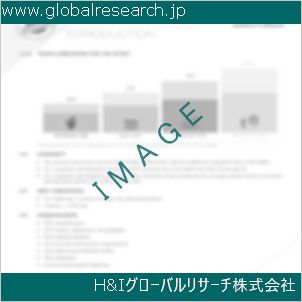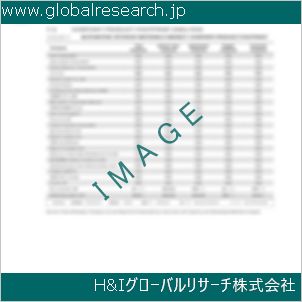Table of Contents
1 Industry Overview of Paraformaldehyde
1.1 Definition and Specifications of Paraformaldehyde
1.1.1 Definition of Paraformaldehyde
1.1.2 Specifications of Paraformaldehyde
1.2 Classification of Paraformaldehyde
1.3 Applications of Paraformaldehyde
1.3.1 Nuclear Application
1.3.2 Non-Nuclear Application
1.4 Industry Chain Structure of Paraformaldehyde
1.5 Industry Overview and Major Regions Status of Paraformaldehyde
1.5.1 Industry Overview of Paraformaldehyde
1.5.2 Global Major Regions Status of Paraformaldehyde
1.6 Industry Policy Analysis of Paraformaldehyde
1.7 Industry News Analysis of Paraformaldehyde
2 Manufacturing Cost Structure Analysis of Paraformaldehyde
2.1 Raw Material Suppliers and Price Analysis of Paraformaldehyde
2.2 Equipment Suppliers and Price Analysis of Paraformaldehyde
2.3 Labor Cost Analysis of Paraformaldehyde
2.4 Other Costs Analysis of Paraformaldehyde
2.5 Manufacturing Cost Structure Analysis of Paraformaldehyde
2.6 Manufacturing Process Analysis of Paraformaldehyde
3 Technical Data and Manufacturing Plants Analysis of Paraformaldehyde
3.1 Capacity and Commercial Production Date of Global Paraformaldehyde Major Manufacturers in 2023
3.2 Manufacturing Plants Distribution of Global Paraformaldehyde Major Manufacturers in 2023
3.3 R&D Status and Technology Source of Global Paraformaldehyde Major Manufacturers in 2023
3.4 Raw Materials Sources Analysis of Global Paraformaldehyde Major Manufacturers in 2023
4 Capacity, Production and Revenue Analysis of Paraformaldehyde by Regions, Types and Manufacturers
4.1 Global Capacity, Production and Revenue of Paraformaldehyde by Regions 2019-2024
4.2 Global and Major Regions Capacity, Production, Revenue and Growth Rate of Paraformaldehyde 2019-2024
4.3 Global Capacity, Production and Revenue of Paraformaldehyde by Types 2019-2024
4.4 Global Capacity, Production and Revenue of Paraformaldehyde by Manufacturers 2019-2024
5 Price, Cost, Gross and Gross Margin Analysis of Paraformaldehyde by Regions, Types and Manufacturers
5.1 Price, Cost, Gross and Gross Margin Analysis of Paraformaldehyde by Regions 2019-2024
5.2 Price, Cost, Gross and Gross Margin Analysis of Paraformaldehyde by Types 2019-2024
5.3 Price, Cost, Gross and Gross Margin Analysis of Paraformaldehyde by Manufacturers 2019-2024
6 Consumption Volume, Consumption Value and Sale Price Analysis of Paraformaldehyde by Regions, Types and Applications
6.1 Global Consumption Volume and Consumption Value of Paraformaldehyde by Regions 2019-2024
6.2 Global and Major Regions Consumption Volume, Consumption Value and Growth Rate of Paraformaldehyde 2019-2024
6.3 Global Consumption Volume and Consumption Value of Paraformaldehyde by Types 2019-2024
6.4 Global Consumption Volume and Consumption Value of Paraformaldehyde by Applications 2019-2024
6.5 Sale Price of Paraformaldehyde by Regions 2019-2024
6.6 Sale Price of Paraformaldehyde by Types 2019-2024
6.7 Sale Price of Paraformaldehyde by Applications 2019-2024
6.8 Market Share Analysis of Paraformaldehyde by Different Sale Price Levels
7 Supply, Import, Export and Consumption Analysis of Paraformaldehyde
7.1 Supply, Consumption and Gap of Paraformaldehyde 2019-2024
7.2 Global Capacity, Production, Price, Cost, Revenue, Supply, Import, Export and Consumption of Paraformaldehyde 2019-2024
7.3 USA Capacity, Production, Price, Cost, Revenue, Supply, Import, Export and Consumption of Paraformaldehyde 2019-2024
7.4 EU Capacity, Production, Price, Cost, Revenue, Supply, Import, Export and Consumption of Paraformaldehyde 2019-2024
7.5 China Capacity, Production, Price, Cost, Revenue, Supply, Import, Export and Consumption of Paraformaldehyde 2019-2024
7.6 Japan Capacity, Production, Price, Cost, Revenue, Supply, Import, Export and Consumption of Paraformaldehyde 2019-2024
8 Major Manufacturers Analysis of Paraformaldehyde
8.1 Manufacturer One
8.1.1 Company Profile
8.1.2 Product Picture and Specifications
8.1.2.1 Type I
8.1.2.2 Type II
8.1.2.3 Type III
8.1.3 Capacity, Production, Price, Cost, Gross and Revenue
8.1.4 Contact Information
8.2 Manufacturer Two
8.2.1 Company Profile
8.2.2 Product Picture and Specifications
8.2.2.1 Type I
8.2.2.2 Type II
8.2.2.3 Type III
8.2.3 Capacity, Production, Price, Cost, Gross and Revenue
8.2.4 Contact Information
8.3 Manufacturer Three
8.3.1 Company Profile
8.3.2 Product Picture and Specifications
8.3.2.1 Type I
8.3.2.2 Type II
8.3.2.3 Type III
8.3.3 Capacity, Production, Price, Cost, Gross and Revenue
8.3.4 Contact Information
8.4 Manufacturer Four
8.4.1 Company Profile
8.4.2 Product Picture and Specifications
8.4.2.1 Type I
8.4.2.2 Type II
8.4.2.3 Type III
8.4.3 Capacity, Production, Price, Cost, Gross and Revenue
8.4.4 Contact Information
8.5 Manufacturer Five
8.5.1 Company Profile
8.5.2 Product Picture and Specifications
8.5.2.1 Type I
8.5.2.2 Type II
8.5.2.3 Type III
8.5.3 Capacity, Production, Price, Cost, Gross and Revenue
8.5.4 Contact Information
…
9 Marketing Trader or Distributor Analysis of Paraformaldehyde
9.1 Marketing Channels Status of Paraformaldehyde
9.2 Traders or Distributors with Contact Information of Paraformaldehyde by Regions
9.3 Ex-work Price, Channel Price and End Buyer Price Analysis of Paraformaldehyde
9.4 Regional Import, Export and Trade Analysis of Paraformaldehyde
10 Industry Chain Analysis of Paraformaldehyde
10.1 Upstream Major Raw Materials Suppliers Analysis of Paraformaldehyde
10.1.1 Major Raw Materials Suppliers with Contact Information Analysis of Paraformaldehyde
10.1.2 Major Raw Materials Suppliers with Supply Volume Analysis of Paraformaldehyde by Regions
10.2 Upstream Major Equipment Suppliers Analysis of Paraformaldehyde
10.2.1 Major Equipment Suppliers with Contact Information Analysis of Paraformaldehyde
10.2.2 Major Equipment Suppliers with Product Pictures Analysis of Paraformaldehyde by Regions
10.3 Downstream Major Consumers Analysis of Paraformaldehyde
10.3.1 Major Consumers with Contact Information Analysis of Paraformaldehyde
10.3.2 Major Consumers with Consumption Volume Analysis of Paraformaldehyde by Regions
10.4 Supply Chain Relationship Analysis of Paraformaldehyde
11 Development Trend of Analysis of Paraformaldehyde
11.1 Capacity, Production and Revenue Forecast of Paraformaldehyde by Regions and Types
11.1.1 Global Capacity, Production and Revenue of Paraformaldehyde by Regions 2024-2029
11.1.2 Global and Major Regions Capacity, Production, Revenue and Growth Rate of Paraformaldehyde 2024-2029
11.1.3 Global Capacity, Production and Revenue of Paraformaldehyde by Types 2024-2029
11.2 Consumption Volume and Consumption Value Forecast of Paraformaldehyde by Regions, Types and Applications
11.2.1 Global Consumption Volume and Consumption Value of Paraformaldehyde by Regions 2024-2029
11.2.2 Global and Major Regions Consumption Volume, Consumption Value and Growth Rate of Paraformaldehyde 2024-2029
11.2.3 Global Consumption Volume and Consumption Value of Paraformaldehyde by Types 2024-2029
11.2.4 Global Consumption Volume and Consumption Value of Paraformaldehyde by Applications 2024-2029
11.3 Supply, Import, Export and Consumption Forecast of Paraformaldehyde
11.3.1 Supply, Consumption and Gap of Paraformaldehyde 2024-2029
11.3.2 Global Capacity, Production, Price, Cost, Revenue, Supply, Import, Export and Consumption of Paraformaldehyde 2024-2029
11.3.3 USA Capacity, Production, Price, Cost, Revenue, Supply, Import, Export and Consumption of Paraformaldehyde 2024-2029
11.3.4 EU Capacity, Production, Price, Cost, Revenue, Supply, Import, Export and Consumption of Paraformaldehyde 2024-2029
11.3.5 China Capacity, Production, Price, Cost, Revenue, Supply, Import, Export and Consumption of Paraformaldehyde 2024-2029
11.3.6 Japan Capacity, Production, Price, Cost, Revenue, Supply, Import, Export and Consumption of Paraformaldehyde 2024-2029
12 New Project Investment Feasibility Analysis of Paraformaldehyde
12.1 New Project SWOT Analysis of Paraformaldehyde
12.2 New Project Investment Feasibility Analysis of Paraformaldehyde
13 Conclusion of the Global Paraformaldehyde (CAS 30525-89-4) Industry 2024 Market Research Report
| ※参考情報 パラホルムアルデヒドは、化学式 (CH2O)n で表される多量体の一種であり、ホルムアルデヒドの重合体として知られています。通常、白色の粉末状または顆粒状で存在し、水に溶解するとホルムアルデヒド単体に分解します。パラホルムアルデヒドは、特にその用途の広さから、多くの工業的および研究の分野で利用されています。 パラホルムアルデヒドは、主にホルムアルデヒドが脱水して形成される物質です。その構造は、線状ポリマーであり、非常に安定した化合物として知られています。特に、その溶解性は、ホルムアルデヒドと比べて低いため、特定の条件下での使用に適しています。パラホルムアルデヒドは、ホルムアルデヒドよりも取り扱いやすく、微生物の抑制や防腐剤として利用されることが多いです。 パラホルムアルデヒドは、医療分野でも広く使用されています。特に、組織標本の固定剤として重要な役割を果たしています。生物学的試料を保存する際、その細胞や組織の構造を保持し、分解を防ぐためにパラホルムアルデヒドが使われます。このプロセスは、病理学的研究や細胞生物学の観察において不可欠です。さらに、パラホルムアルデヒドは、免疫染色や顕微鏡検査など、分子生物学におけるさまざまな技術に応用されています。 また、パラホルムアルデヒドは、工業分野でも重要な役割を果たしています。特に、樹脂やプラスチックの製造において、接着剤や成形材料の成分として使用されます。様々なタイプの樹脂、特にフェノール樹脂やウレタン樹脂の製造過程で重要な中間体となり、その特性から優れた接着性や強度を提供します。また、パラホルムアルデヒドは、コーティング材料や塗料の製造にも利用され、耐水性や耐久性を高めるために添加されることがあります。 さらに、パラホルムアルデヒドは、化学合成過程において重要な原料としても機能します。さまざまな化合物の合成に用いられるため、有機化学の基礎材料としても用いられています。例えば、医薬品や農薬の合成においても、そのユニークな化学特性が重宝されているのです。 パラホルムアルデヒドに関連する技術分野も多岐にわたります。まず、合成技術においては、パラホルムアルデヒドを効率的に製造する方法が開発されています。これにより、反応条件の最適化や反応機構の研究が進められ、その生産性が向上しています。最近では、より環境に優しいプロセスが模索されており、持続可能な化学合成技術の開発が進められています。 また、パラホルムアルデヒドを用いたナノテクノロジーの応用も注目されています。ナノ粒子の表面修飾や、ナノ構造の形成において、パラホルムアルデヒドの化学特性が活用されています。このような応用は、新しい材料の開発やエネルギー変換デバイスの改善など、多方面での研究が進んでいます。 ただし、パラホルムアルデヒドにはいくつかの注意点も存在します。その主なものとして、毒性や発癌性のリスクがあります。パラホルムアルデヒドは、有害な揮発性有機化合物(VOC)の一つとされ、取り扱いや使用に際しては十分な注意が必要です。また、作業環境での露出が問題視されており、適切な換気や保護具の使用が推奨されています。これに伴い、パラホルムアルデヒドの使用に関する規制やガイドラインも整備されており、従業員や環境への影響を最小限に抑えることが求められています。 このように、パラホルムアルデヒドは、その多様な用途と特性から工業、医療、研究など多くの分野で欠かせない物質となっています。これからも、持続可能な開発や新しい技術の探求が進む中で、パラホルムアルデヒドの利用方法やその関連技術は進化を続けることでしょう。今後の研究や技術開発が、より安全で効率的な利用を可能にすることを期待しています。 |
❖ 免責事項 ❖
http://www.globalresearch.jp/disclaimer












